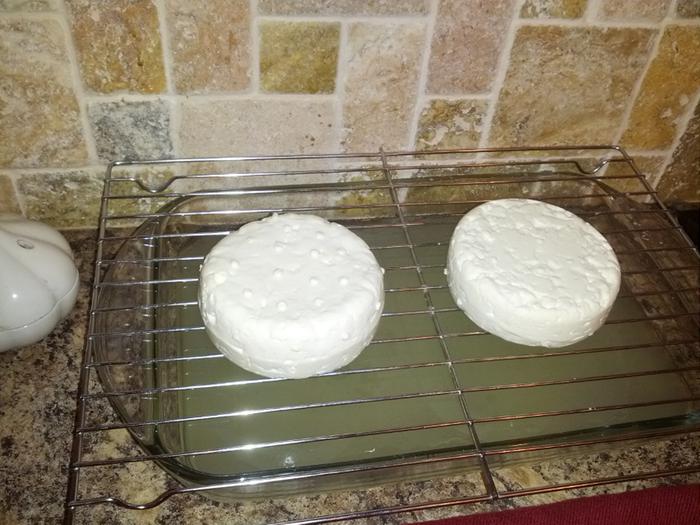Well, we un-molded the cheeses and they turned out really well.

We salted them, and left them to dry for 24 hrs. They are now aging in our fridge.
We followed the excellent instructions in David Asher's
book. (This is the book I wish I owned 5 years ago when I tried making cheese first)








